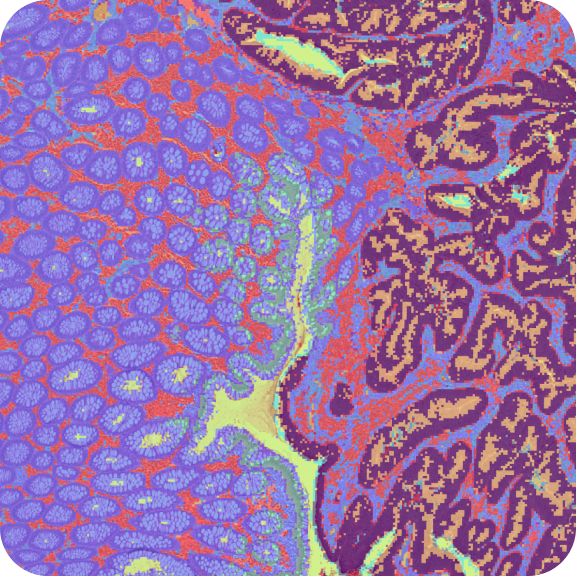Visium HD Spatial Gene Expression Library, Mouse Small Intestine (FFPE)
HD Spatial Gene Expression dataset analyzed using Space Ranger 3.0.0

Learn about Visium analysis
Biomaterials
A mouse small intestine tissue block (FFPE) was obtained from Charles River Laboratories.
- Strain: C57BL/6
- Sex: Male
- Age: 8 weeks
Sample preparation
The Swiss roll technique for preparing the mouse intestine was used in-house. A 5 µm section was taken with a microtome (Epredia HM355S). Sectioning, deparaffinization, H&E staining and imaging followed the Visium HD FFPE Tissue Preparation Handbook (CG000684).
Imaging
- Image type: H&E
- Microscope: Olympus VS200 Slide Scanner
- Objective magnification: 20X
- Numerical Aperture: 0.8
- ScopeLED light source: VS200 LED, Olympus integrated bright field source
- Camera: iDS VS-264C, Olympus scanner integrated camera
- Exposure: 500 microseconds
Assay workflow
Probe hybridization, probe ligation, slide preparation, probe release, extension, and library construction followed the Visium HD Spatial Gene Expression Reagent Kits User Guide (CG000685).
- Slide serial number: H1-F9HB7PZ
- Area: D1
- Instrument: Visium CytAssist
- Probe set: Visium Mouse Transcriptome Probe Set v2.0
Sequencing
- Indexing: Dual index plate TS set A; sample index D12
- Sequencing instrument: Illumina NovaSeq 6000
- Sequencing configuration: 43 bp read 1, 50 bp read 2, 10 bp i7 sample index, and 10 bp i5 sample index
- Sequencing depth: 321.6 million reads
Analysis
Space Ranger v3.0 was used to map FASTQ files to the reference, detect tissue, align the data to the microscope and CytAssist images, and output feature-barcode matrices for further analysis.
How to view data
To get started, download Loupe Browser v8.0 to explore the Loupe file, or read more about the other Space Ranger outputs.
This dataset is licensed under the Creative Commons Attribution 4.0 International (CC BY 4.0) license. 10x citation guidelines available here.
